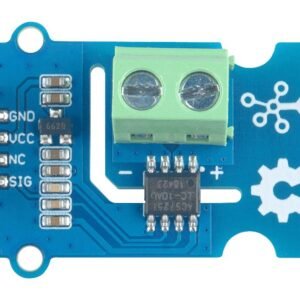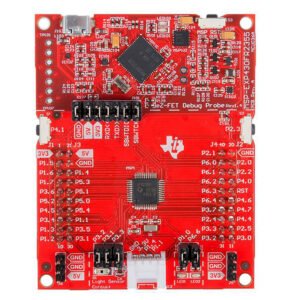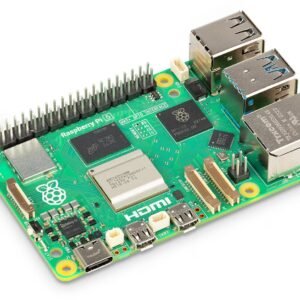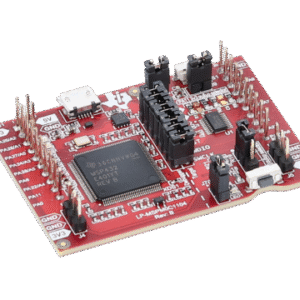TMDSLCDK6748 Texas Instruments TMDSLCDK6748 DSP Development Kit
-
Low cost, high utility – A dense mix of audio, video, Ethernet, USB, UART, and storage on one compact board dramatically reduces accessory sprawl during prototyping.
-
Software-ready out of the box – Processor SDK RTOS and CCS examples shorten bring-up; you get working I/O and reference projects on day one.
-
Open hardware collateral – Public schematics, PCB, and BOM accelerate custom board spin-ups and de-risk power, clocking, and layout choices.
Texas Instruments TMDSLCDK6748 (TMS320C6748 DSP LCDK) Overview
The Texas Instruments TMDSLCDK6748—often called the C6748 LCDK (Low-Cost Development Kit)—is a pragmatic, production-proven evaluation platform centered on TI’s TMS320C6748 C674x DSP. Designed for engineers who need true real-time signal processing without the complexity of a full application processor, this board balances compute performance, I/O breadth, and cost, enabling fast concept-to-prototype cycles in audio, communications, sensing, and edge analytics.
At its heart is the C6748 floating-/fixed-point DSP core, clocked up to 456 MHz. This architecture delivers the deterministic, low-latency math throughput demanded by filtering, transforms, adaptive algorithms, and machine-hearing/voice pipelines. The LCDK surrounds the DSP with 128 MB DDR2 SDRAM and onboard NAND Flash for boot and data, plus microSD support for removable storage. Connectivity spans 10/100 Ethernet, USB (host/OTG), UART via a convenient USB-to-serial bridge, and SATA for high-speed external storage or data logging needs.
Signal I/O is a first-class citizen: the board exposes line-level audio input/output and microphone input for immediate audio algorithm bring-up; legacy but still useful video paths (VGA, composite in/out) simplify quick vision demos, lab instrumentation displays, and user-interface tests. A 14-pin JTAG header supports robust, cycle-accurate debug and profiling through TI’s Code Composer Studio (CCS) with an external XDS-series emulator. Power is intentionally simple—single 5 V DC input—making the kit easy to deploy on a bench, cart, or in a classroom.
On the software side, TMDSLCDK6748 integrates smoothly with TI’s Processor SDK RTOS, giving you production-grade board support packages, peripheral drivers, RTOS kernels, network stacks, file systems, and a representative suite of examples. This “batteries-included” approach dramatically reduces bring-up effort and risk. Developers get a clear path from out-of-box demos to custom firmware that is portable and maintainable, with solid reference projects for audio, comms, and general DSP workloads.
Whether you’re validating a new audio feature, building a deterministic pre-processing stage for ML at the edge, or migrating algorithms from MATLAB/Python into embedded C/C++, the TMDSLCDK6748 provides a reliable and well-documented foundation. Hardware collateral—schematics, layout, and BOM—are publicly available, paving a smoother path to custom board design once your prototype requirements crystallize.
Specifications
| Item | Detail |
|---|---|
| Processor | Texas Instruments TMS320C6748 (C674x) floating-/fixed-point DSP, up to 456 MHz |
| DSP Features | VLIW core, hardware MACs, saturated arithmetic, native float support, low-latency pipelines |
| Onboard Memory | 128 MB DDR2 SDRAM (typ. 150 MHz data rate) |
| Non-volatile Memory | 128 MB 16-bit NAND Flash for boot/data |
| Removable Storage | microSD/MMC card slot (boot and data logging) |
| Ethernet | 10/100 Mbps Fast Ethernet with link/activity LEDs |
| USB | 1× USB Host (Full-Speed) and 1× mini-USB OTG (High-Speed, board-dependent); 1× USB-to-UART bridge for console |
| UART/Console | FTDI-based USB-to-serial connected to a DSP UART for out-of-box terminal access |
| Video Output | VGA (15-pin D-Sub); composite video out via onboard video DAC (demo-friendly) |
| Video Input | Composite video in (for quick vision/feature-extraction demos) |
| Audio I/O | Line-in, line-out, and mic-in 3.5 mm jacks; codec connected to the DSP for real-time audio processing |
| High-Speed Storage | SATA 3 Gbps connector for logging or bulk datasets (where supported) |
| Expansion | Board headers for additional peripherals; LCD connector provided (compatible panels may require adapters) |
| Boot Modes | Selectable via DIP switches: NAND, UART, SD/MMC, and others per C6748 boot ROM |
| Debug | 14-pin JTAG header; requires external XDS100/XDS110/XDS200/XDS510/XDS560 emulator (no onboard emulator) |
| Indicators | Power and status LEDs; Ethernet link/activity LEDs |
| Power Input | Single 5 V DC barrel jack; onboard regulators generate local rails |
| SDK & Tools | Processor SDK RTOS support; Code Composer Studio IDE; examples, drivers, and peripheral libraries |
| Mechanical | Compact single-board form factor with clearly labeled connectors and test points |
| Documentation | Full schematics, PCB layout files, and BOM available for design reuse |
| In the Box | LCDK board, USB cable(s), microSD card (with adapter, in many kits), quick-start material |
Applications
Real-time audio and voice processing. With native floating-point and plentiful memory bandwidth, the TMDSLCDK6748 is an ideal sandbox for speech enhancement, beamforming, acoustic echo cancellation (AEC), noise suppression, automatic gain control, and psychoacoustic effects. The on-board line and mic interfaces let you audition algorithms with minimal external gear. For product teams in conferencing, intercoms, smart appliances, or musical equipment, the LCDK enables rapid iteration, subjective listening tests, and robust performance benchmarking.
Communications and modem prototyping. The deterministic timing of a dedicated DSP core supports PHY-layer and low-latency link-layer work: FIR/IIR filtering, resampling, channel estimation, equalization, FSK/QAM/OFDM modulation, and soft-decision decoding. The combination of Ethernet, UART, and (optionally) SATA provides flexible data ingress/egress and trace capture for characterization. Use the LCDK to validate algorithm blocks before committing to an ASIC/FPGA partition or migrating to a more integrated SoC.
Edge analytics and signal pre-processing for ML. Many embedded ML pipelines rely on efficient front-end transforms—STFT/MFCC for audio, FIR/FFT feature extraction for vibration, and envelope statistics for biosignals. The C6748 executes these transforms with predictable latency, producing compact features suitable for downstream microcontrollers or neural accelerators. The LCDK’s removable storage and Ethernet make it easy to push/pull datasets and roll over captured logs.
Instrumentation and test systems. Need a dependable digital signal engine to glue together sensors, legacy video feeds, or bench instruments? The board’s composite/VGA and audio I/O, coupled with a straightforward 5 V power architecture, enable lab-friendly fixtures for production test or field diagnostics. The RTOS environment and CCS scripting streamline continuous integration for manufacturing lines and regression testing.
Education and research. The availability of complete design files and a mature software stack makes the TMDSLCDK6748 an excellent teaching platform for real-time DSP courses. Students can progress from theory (Z-transforms, FFTs, adaptive filters) to working implementations that are observable with scopes and audio monitors, encouraging a strong intuition for numerical stability, fixed- vs. floating-point trade-offs, and cache/memory effects.
Legacy video and HMI prototyping. While modern displays frequently use LVDS/MIPI, the LCDK’s VGA/composite paths remain useful for quick human-machine interface mockups, feature overlays, and algorithm visualization (e.g., drawing detection bounding boxes over a video feed). This can significantly shorten feedback cycles during early algorithm tuning.
Why choose the TMDSLCDK6748 for your project?
1) It accelerates time-to-first-demo. The board arrives with the essential analog and digital I/O already wired and powered. Plug in 5 V, connect the UART console over USB, and you’re ready to run examples from the Processor SDK RTOS. No custom carrier board, mezzanines, or power trees are required to measure first-order performance.
2) It reduces integration risk. Reference designs, mature drivers, and CCS debugging reduce the usual uncertainty in peripheral bring-up. A disciplined RTOS environment provides determinism, making it easier to correlate algorithm behavior in the lab with what you’ll see later in a production device.
3) It smooths the path to custom hardware. Because the kit’s schematics, layout, and BOM are public, you can adapt the proven power and signal integrity choices directly into your own PCB. This lowers NRE cost and shortens the “rev-A to rev-B” loop.
Development Workflow Highlights
-
Toolchain and IDE: Code Composer Studio (CCS) with JTAG emulation provides source-level debug, real-time watch/graph views, cache profiling, and optimized C/C++ build flows.
-
RTOS & Middleware: Processor SDK RTOS bundles TI-RTOS/SYS/BIOS kernels, peripheral drivers (EMAC, MMC/SD, USB, SATA, I2C, SPI, UART), network stacks, FAT/FS, and ready-to-run examples, so you can focus on algorithm logic instead of board support.
-
Floating-/Fixed-Point Flexibility: Prototype in floating-point for algorithm clarity, then measure fixed-point conversion performance to optimize MIPS and memory without large code rewrites.
-
Data Movement Efficiency: Leverage EDMA and peripheral DMA channels to stream audio/video/sensor data with minimal CPU intervention, leaving the DSP core for math.
-
Repeatable Testing: Use the microSD for bootable test images; log to SATA or SD for long-form capture; automate with CCS scripts for regression and CI.
Practical Notes & Design Considerations
-
External emulator required. The board exposes a standard 14-pin JTAG header but does not include an onboard emulator. Plan to use an XDS-series probe (e.g., XDS110/XDS200/XDS560) for development and production test.
-
Display options. The “LCDK” name reflects display capability on older, widely available panels; for current projects, you may use the VGA/composite ports for visualization or connect a contemporary display through an adapter or a custom daughterboard.
-
Power simplicity. Single 5 V input means you can run from common bench supplies or field power bricks. The on-board regulators handle local rails for the DSP and peripherals, simplifying portability.
-
Scalability. If your product roadmap later calls for Linux plus a rich UI, TI’s related OMAP-L1x family (with ARM9 + C674x) provides a drop-in software migration path while retaining many peripheral and SDK commonalities.
Conclusion
Texas Instruments’ TMDSLCDK6748 brings the precision and determinism of a C674x DSP to an accessible, well-documented, and extensible development kit. With floating-point performance, abundant I/O, straightforward 5 V power, and a robust RTOS ecosystem, it’s an excellent choice for teams building:
-
Audio/voice features for conferencing, intercom, or instruments
-
PHY-layer and low-latency communications blocks
-
Edge analytics and signal pre-processing pipelines
-
Lab instruments, testers, and educational platforms
If you need to validate DSP algorithms quickly and carry those learnings into a custom product with minimal friction, the TMDSLCDK6748 offers exactly the right blend of capability, simplicity, and long-term maintainability.
Specification: Texas Instruments TMDSLCDK6748 DSP Development Kit
|
User Reviews
Only logged in customers who have purchased this product may leave a review.








There are no reviews yet.